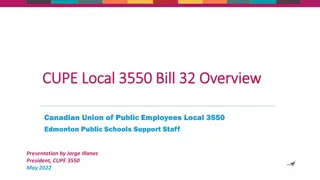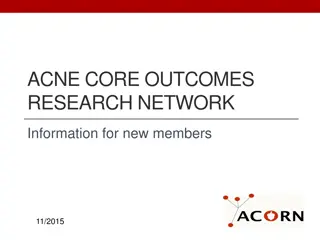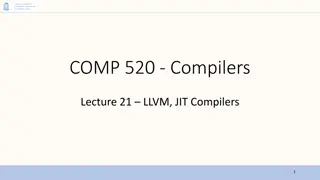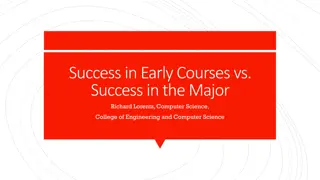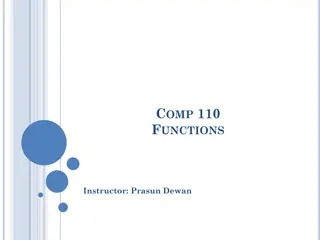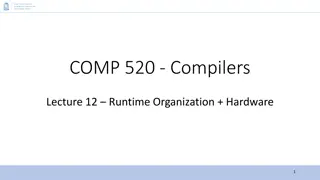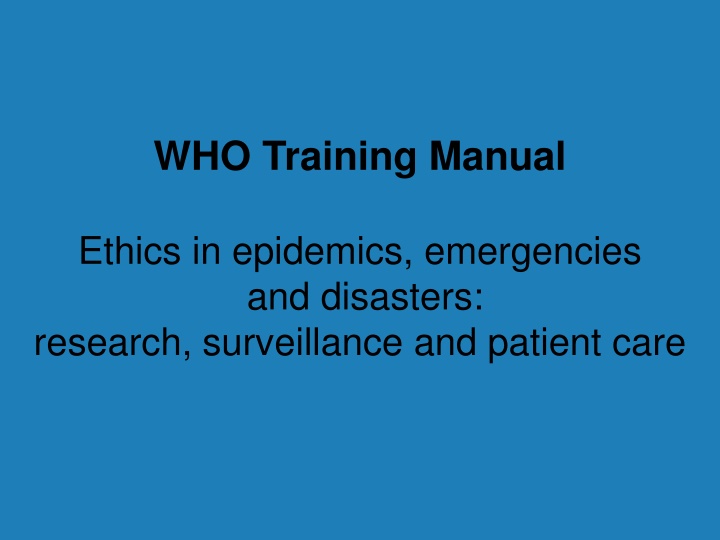
Ethics in Epidemics, Emergencies, and Disasters: Research and Surveillance
Explore the distinctions between public health surveillance and research, understand ethical principles in emergencies, and evaluate normative instruments in the context of epidemics and disasters.
Download Presentation

Please find below an Image/Link to download the presentation.
The content on the website is provided AS IS for your information and personal use only. It may not be sold, licensed, or shared on other websites without obtaining consent from the author. If you encounter any issues during the download, it is possible that the publisher has removed the file from their server.
You are allowed to download the files provided on this website for personal or commercial use, subject to the condition that they are used lawfully. All files are the property of their respective owners.
The content on the website is provided AS IS for your information and personal use only. It may not be sold, licensed, or shared on other websites without obtaining consent from the author.
E N D
Presentation Transcript
WHO Training Manual Ethics in epidemics, emergencies and disasters: research, surveillance and patient care
Part 1 Research and Surveillance
Core competence 1 Ability to analyse the boundaries between public health practice, including surveillance, and research and their ethical implications in emergencies
Corresponding learning objectives Distinguish between public health surveillance and public health research Identify the scope of activities that could qualify as research during emergency response and would normally require research ethics review Demonstrate understanding of the ethical principles and requirements addressed in current normative instruments relative to research and surveillance in emergencies Identify the shortcomings of current normative instruments for use in emergency situations, and evaluate alternatives L.O. 1.1
Public health surveillance Public health surveillance as a series of ongoing systematic activities, including collection, analysis, and interpretation of health-related data essential to planning, implementing, and evaluating public health practice closely integrated to the dissemination of data to those who need to know and linked to prevention and control (CDC, 2010) Surveillance as eyes of public health (Fairchild et al., 2007) L.O. 1.1
Public health surveillance vs. Research PH surveillance and research can involve studies, investigations, the same methods (e.g. medical record review, data mining) and human subjects The same activity is sometimes considered research and sometimes public health practice Some surveillance systems constitute research (CDC, 2010) How should public health surveillance and research be distinguished? L.O. 1.1
A fine line? Distinction on the basis of intent and purpose of the activity? (CDC 2010) The purpose of research is to generate or contribute to generalizable knowledge The purpose of surveillance (non-research) comprehends non- research activities to prevent or control disease or injury and to improve health L.O. 1.1
Problems regarding this definition Why should the pursuit of generalizable knowledge require adherence to special ethical principles? Prototypical research (i.e. clinical experimentation) generates generalizable knowledge precisely in order to reduce disease and to improve health Assuming, there are morally relevant differences between research and surveillance: Why are those ethical requirements very different in practice (in case of informed consent etc.)? L.O. 1.1
Requirements for the conduct of research Research is generally subject to independent ethics review Documents and guidelines regulating the ethical conduct of research Nuremberg Code, Belmont Report, Declaration of Helsinki, CIOMS guidelines etc. L.O. 1.1
Scope of research during epidemics Specific categories of research may be subject to expedited review or be exempted from ethics review altogether The level of review required is proportionate to the risks associated with the research The riskier the research, the greater the degree of scrutiny Level of review according to the vulnerability of the research participants Procedures for ethics review may be adjusted during public health emergencies, in order to ensure timely research L.O. 1.1
Types of research and examples (I) Basic science research Research that is laboratory-based, such as testing of human biological materials Example: vulnerability to an agent that is causing an epidemic Clinical research Research in which participants (individuals or groups) are prospectively assigned to a health intervention, from drugs and biological products to devices and preventive programmes Example: clinical trial of therapy in an emergency situation Health services and health systems research Research addressing the administrative and social aspects of health and health care, including financial aspects Example: investigation of the impact of dealing with an epidemic on hospital performance L.O. 1.1
Types of research and examples (II) Population-based research Research on individuals in a wider context, which includes epidemiological and cohort studies and investigations of the impact of social determinants of health Example: study of the health outcomes of children who lived through a disaster Policy and advocacy research Research on how evidence can best be transformed into practice and used to improve public health Can social media be used to improve disaster preparedness? Studies of each type could be conducted in the context of an epidemic or disaster response However, some types of research might be less pertinent during public health emergencies L.O. 1.1
Benchmarks in the history of research ethics - guidelines The Nuremberg trials and the Nuremberg Code (1947) World Medical Association Declaration of Helsinki (1964) The Belmont Report (1979) Protection of Human Subjects (1991) US Federal funding; enacted into law in 1981 (Department of Health and Human Services, 1991) Council for International Organizations of Medical Science (CIOMS) guidelines (2002) The Tri-Council Policy Statement (Canadian Institutes of Health Research et al., 1998, 2005) L.O. 1.1
Core ethical principals and issues covered by guidelines Respect for people s autonomy CIOMS, Tri-Council Policy Statement, article 1.1, Belmont Report, Basic ethical principles Informed consent CIOMS;General principles, guidelines 4 6; Declaration of Helsinki, privacy and confidentiality, articles 25 32; Tri-Council Policy Statement, Chapter 3, The consent process Beneficence CIOMS, General principles Belmont Report, Basic ethical principles Non-maleficence CIOMS, General principles Declaration of Helsinki, Risks, burdens and benefits (articles 16 18) L.O. 1.1
Core ethical principals and issues covered by guidelines Justice CIOMS, General principles, guidelines 10 and 12 Declaration of Helsinki, Risks, burdens and benefits, articles 16 18, Tri-Council Policy Statement, article 1.1 and Chapter 4, Fairness and equity in research participation Vulnerability CIOMS, General principles, guidelines 13 16 Declaration of Helsinki, Vulnerable groups and individuals, articles 19 and 20 Common rule Privacy Tri-Council Policy Statement, Chapter 5, Privacy and confidentiality Declaration of Helsinki, Privacy and confidentiality, article 24 Confidentiality CIOMS, Guideline 18, Safeguarding confidentiality; Tri-Council Policy Statement, Chapter 5, Privacy and confidentiality Research ethics review CIOMS, Guidelines 2 and 20 L.O. 1.1
Ethical issues in public health emergencies Beneficence and non-maleficence Risks to research subjects is acceptable if expected benefits outweigh those risks Level of ethical review determined by foreseeable risks Perception of risk for harm may differ in a public health emergency Individuals may accept higher levels of risk than they would have accepted under non-emergency circumstances Changed perception of risk may shape policies, Example: setting vaccination policies is based on sub- optimal evidence L.O. 1.1
Research integrity and conflicts of interest Integrity of research is crucial for public trust and adequate evidence for policy-making Problems arise regarding relations between researchers and pharmaceutical companies Importance of disclosing such relationships in detail (ethics guidelines, editorial publication policies) However, research ethics instruments do not specifically address emergency settings Other compelling factors, as rapid publication of research results L.O. 1.1
Alternative models and guidelines for public health emergencies Attempts to provide guidance for public health emergencies mainly focus on influenza pandemics: Ethical guidance in pandemic influenza (CDC) Ethical considerations in developing a public health response to pandemic influenza (WHO) Pandemic influenza preparedness and response (WHO) Distinguishing crucial tasks from non-crucial ones during public health emergencies (expedited review) Proportional review (risk analysis) creation of a pre-emergency repository of (parts of) study protocols fast-track reviews Establishment of a wiki-like platform to store best practices in emergency research design L.O. 1.1
Conclusion Core Competence 1 Research and surveillance are integral, crucial parts of public health interventions during emergencies The clear distinction between public health surveillance and research is controversial Documents and guidelines regulating the ethical conduct of research Perception of risk for harm may differ in a public health emergency Integrity of research is crucial for public trust and adequate evidence for policy-making L.O. 1.1
Sources Resnik, D.B. & JD, P.D. 2012. Research Ethics Timeline (1932- Present). The National Institute of Environmental Health Sciences Centers for Disease Control and Prevention (2010) Distinguishing public health research and public health nonresearch. Atlanta, Georgia (http://www.cdc.gov/od/science/integrity/docs/cdc-policy- distinguishing-public-health-research-nonresearch.pdf, accessed 26 August 2013). Fairchild AL, Bayer R, Colgrove C (2007) Searching eyes: privacy, the state, and disease surveillance in America. Berkeley, California: University of California Press. L.O. 1.1





